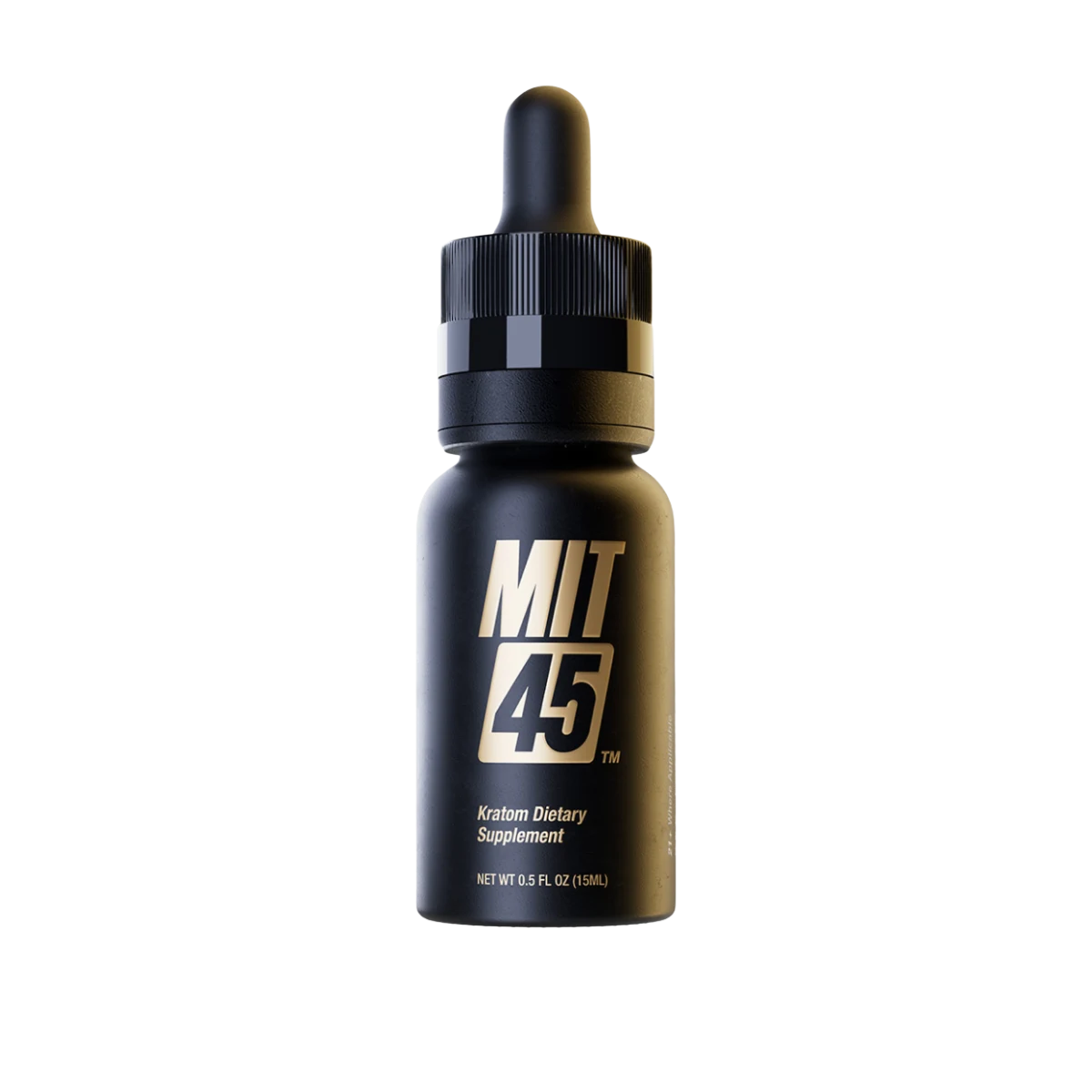1. What Are Kratom Drinks?
Kratom Drinks are beverages made with Kratom, derived from the leaves of the Mitragyna speciosa tree native to Southeast Asia. They contain compounds like mitragynine and 7-hydroxymitragynine that interact with the brain’s receptors.
Here are the types of Kratom Drinks –
Kratom Tea – Brewed by steeping dried or powdered leaves in hot water.
Kratom Shots – Small, concentrated liquid extracts for quick use.
Kratom-Infused Beverages – Seltzers, juices, or energy drinks blended with Kratom and other flavors.
2. Can I Buy Kratom Drinks Online?
Yes! You can easily buy Kratom Drinks online at your convenience. When purchasing online, there are multiple options to consider, including Kratom marketplaces, individual Kratom Drink brand websites, and Amazon. These options not only offer convenience but also low-priced and premium Kratom products that you may find locally, but of inferior quality.
3. Can I Travel With Kratom Drinks?
Traveling with Kratom drinks is legal only where Kratom is allowed. Check state and local laws before traveling with them. Avoid carrying Kratom to places where it’s banned. Always keep Kratom products in original packaging. Stay informed to prevent legal issues during travel.
4. Do I Need A Prescription To Buy Kratom Drinks?
No, you do not need a prescription to buy Kratom drinks. It’s legal at the federal level and can be purchased online or in stores without a doctor’s approval. However, Kratom isn’t approved by the FDA as a medication or dietary supplement, so no prescription is required.
5. Do Kratom Drinks Have Preservatives?
Kratom Drinks may contain preservatives, but it depends on the brand and formulation. Many commercial Kratom beverages use preservatives to extend shelf life and maintain freshness. However, some brands opt for all-natural or preservative-free recipes. Always check the product label or vendor information to confirm.
6. What Is Kratom?
Kratom is an herbal substance derived from the leaves of the Mitragyna speciosa, a tropical tree native to Southeast Asia. Kratom offers a wide range of effects & natural benefits because of its properties, depending on the amount one takes.
7. Is It Legal To Buy Kratom Drinks?
Kratom is legal in most parts of the United States, but laws vary by state and county. Some states have passed the Kratom Consumer Protection Act (KCPA) to regulate its sale. Others have stricter laws or bans under the Controlled Substances Act (CSA). Regulations aim to protect buyers from unsafe or synthetic products. Always check local laws before buying or taking Kratom drinks.
8. Are Kratom Drinks Safe?
Kratom’s safety is a bit complex and not fully understood. The FDA does not regulate it, so quality and purity can’t be guaranteed. Unregulated products may contain contaminants or unknown substances. Scientific research on long-term safety is limited.
9. What Are The Different Kratom Products?
Kratom products come in various forms to suit different preferences. Here are a few –
Kratom Powder – Ground dried leaves; versatile and traditional.
Kratom Capsules – Pre-measured powder in capsule form for convenience.
Kratom Extracts – Concentrated forms like liquid shots or tinctures for higher potency.
Kratom Edibles & Drinks – Gummies, chocolates, or infused beverages for a flavored option.
10. How Do Kratom Drinks Work?
Kratom produces effects in the body because of its alkaloid profile(mitragynine and 7-hydroxymitragynine) that interact with the receptors of the brain once after getting absorbed into your body. These key alkaloids of Kratom are potent and produce a range of effects from strong to mild, depending on the amount of Kratom you are taking.
11. How Long Does a Kratom Drink Take to Kick In?
Kratom drink effects usually start to kick in within 10 minutes to 1 hour, depending on various factors.
Individual Differences – Metabolism, body chemistry, and tolerance can affect onset time.
Method of Taking – Powder: 15–60 min, Tea: 30–90 min, Capsules: 30–90 min, Extracts: 15–30 min.
Food Intake – Taking Kratom on an empty stomach may produce faster effects.
Strain & Amount – Different strains and higher amounts can change how quickly effects appear
12. Does Kratom Show Up In A Urine Test?
Standard 5- or 10-panel urine screens don’t check for kratom alkaloids, so they won’t appear.
If a lab orders a dedicated mitragynine/7-OH panel (LC-MS/MS), kratom can show up for about 2–7 days—potentially a bit longer with heavy, frequent use. Detection in urine may last from a few days up to a week, depending on the amount. Factors like amount taken, frequency, and metabolism affect detection time. If tested specifically for Kratom, it can show up in a urine test.
13. How Long Can Kratom Drinks Stay In the Body?
Duration – It can stay in the body for about 1 to 7 days, depending on usage.
Detection – Specialized tests can detect Kratom’s compounds, such as mitragynine, during this period.
Factors – Metabolism, amount taken, frequency of use, and body fat can affect how long it stays.
14. How Much Kratom Drinks to Take?
There’s no easy or direct answer to this particular question of how much Kratom you should take. Not all Kratom products have the same potency, and every individual’s body reacts differently to Kratom. So it is better to prefer whatever amount feels suitable to you to unlock the real potential of Kratom.
15. What Are The Benefits Of Kratom Drinks?
Typically, people may experience a range of benefits from Kratom, but here are a few that are reported by the majority of buyers that they observed after taking Kratom.
The alkaloids of Kratom are the key factor behind the range of effects Kratom produces.
Q16. What Is Kratom Extract?
Kratom extract is a strong, concentrated form of Kratom with higher levels of active alkaloids. It is made from the leaves of the Mitragyna speciosa tree found in Southeast Asia. The extraction process creates a stronger alkaloid profile than regular Kratom products. Its potency appeals to those seeking stronger effects but may carry higher risks.
Q17. What’s The Difference Between Raw Kratom, Kratom Extracts, And Kratom Drinks?
Here are the Differences between Raw Kratom, Kratom Extracts, and Kratom Drinks
Raw Kratom – Made from Kratom leaves that can be chewed, brewed into tea, or ground into powder. It contains a natural balance of alkaloids, but potency may vary by strain and leaf maturity. Has a bitter, earthy taste and inconsistent strength.
Kratom Extract – A concentrated form with higher levels of active alkaloids. More potent than raw Kratom and requires smaller amounts. Often has a faster onset and comes in forms like liquid shots, tinctures, and resins.
Kratom Drinks – Beverages made with raw Kratom powder or extracts, often blended with flavors or juices. Includes teas, shots, seltzers, and infused juices. Masks bitterness and offers a convenient, more palatable way to consume Kratom.
18. What’s The Best Time To Take Kratom?
Morning – Taking Kratom on an empty stomach in the morning may lead to faster and slightly stronger effects.
Evening – Some people may find taking it more relaxing, with effects building slowly but lasting longer.
Individual Preference – The best time depends on your body chemistry, tolerance, and desired effects.
Potency Matters – Stronger products may influence when and how you prefer to take Kratomf.
Experiment Safely – Try different times to see what works best for you.
19. Is Kratom Natural?
Yes, Kratom is considered totally natural. Here’s the explanation why:
Origin – Kratom comes from the leaves of the Mitragyna speciosa tree, native to Southeast Asia.
Traditional Use – utilized for centuries in Southeast Asia for its natural properties.
Forms – Available as powders, capsules, extracts, and Kratom Drinks, all derived from the plant’s leaves.
20. Which Kratom Is Right For Me?
Raw Kratom – Made from dried Kratom leaves ground into powder or packed into capsules; ideal for beginners due to milder potency.
Kratom Extract – A concentrated form made by extracting active alkaloids from raw leaves; more potent and suited for experienced people.
Choice – Beginners may start with raw powder, while experienced individuals may prefer extracts for more potent effects.
21. What Are The Side Effects Of Kratom?
Moderation – Kratom is generally safe when taken in moderate amounts, but excess can cause side effects.
Suggested Amount – Always follow the recommended serving size on product labels to avoid health risks.
Beginners – those new may feel mild discomfort initially due to Kratom’s potency, which is not necessarily a side effect.
Balance – Adjust and regulate your intake to find a balanced amount that works for you.
22. What Are The Top Kratom Strains?
Kratom comes in several vein colors, each with unique characteristics. The vein and stem color influence the alkaloid profile and effects. Individual experiences may vary from person to person. Most people categorize Kratom mainly into four main strain types –
- Red Vein Kratom
- Green Vein Kratom
- White Vein Kratom
- Yellow/Gold Vein Kratom
23. Are Kratom Drinks Good For Opiate Withdrawal?
Kratom may act as a natural alternative to opiates by binding to similar receptors in the body. It can produce effects that may help ease discomfort during opiate withdrawal. Withdrawal symptoms can include stress, anxiety, mood swings, and loss of appetite. Kratom may help make the withdrawal process smoother and more manageable. Its utilization for this purpose should be approached cautiously and under professional guidance.
24. Can You Overdose On Kratom?
Yes, it is possible to overdose on Kratom if taken in excessive amounts. An overdose generally means taking two to three times more than the recommended serving. This can lead to dangerous and adverse effects on the body. Always follow the dosage guidelines mentioned on the product label to ensure your safety. You can click here to know how much Kratom is too much.
25. How To Buy Kratom?
You can buy Kratom from online vendors or local shops. Online vendors offer a wide variety of strains, forms (powders, capsules, extracts), and potencies. Choose reputable sellers with positive reviews, third-party lab testing, and A.K.A. approval. Local shops require checking Kratom’s legality in your city or county before purchase. They are found in smoke shops, vape stores, tobacco shops, or herbal stores. Use online listings and reviews to find trusted local sellers.
26. Why Is My Kratom Not Working?
If your Kratom isn’t working as expected, several factors could be responsible.
Tolerance: Taking Kratom for Long-term can build tolerance, requiring higher amounts for the same effects. The body adapts to Kratom’s compounds, reducing its impact.
Inconsistent Potency & Quality – The lack of regulation results in variations in purity and strength between brands, batches, or even within the same batch. Growing conditions and processing also affect potency.
Storage & Degradation – Exposure to light, air, moisture, or heat can weaken Kratom. Store it in a cool, dry, dark place in an airtight container to maintain freshness.
Individual Factors – Metabolism, body weight, age, health, and combining Kratom with other substances can alter its effects and reduce potency.
27. How Can I Make Kratom Tea?
Ingredients – 2–4 grams Kratom powder or leaves, 2 cups water, optional- lemon juice, honey, sugar, or other sweeteners.
Instructions – Crush leaves or use fine powder. Heat water gently (avoid boiling). Add Kratom and simmer for 15–20 min, stirring occasionally—strain using a fine mesh or coffee filter. Add citrus juice for flavor and alkaloid extraction, and sweeten as desired.
Enjoy the Kratom Tea!
28. Will Kratom Show Up On A Standard Drug Test?
No, Kratom does not usually appear on standard drug tests. Common 5-panel and 10-panel tests check for substances like THC, cocaine, opiates, amphetamines, and benzodiazepines. Kratom’s active compounds, mitragynine and 7-hydroxymitragynine, are not part of these routine screenings. Specialized tests are required to detect Kratom. This makes Kratom unlikely to be flagged in standard workplace drug testing.
29. Why Do People Use Kratom?
Kratom (Mitragyna speciosa) is a tropical tree native to Southeast Asia, with leaves used to make various products for their effects.
Self-Treatment – Some people may take Kratom for managing anxiety, fatigue & productivity.
Opioid Withdrawal – May help reduce cravings and ease withdrawal symptoms, based on buyer & scientific reports.
Mood & Energy – May have stimulant-like effects such as increased energy, alertness, and improved mood for some individuals.
30. What’s the Best Way to Take Kratom?
There are several ways to take Kratom, but the two most popular are powders and capsules.
Kratom Powder – Ideal for those who like customizing their experience. Can be added to smoothies, recipes, or used to make DIY capsules with unique blends.
Kratom Capsules – Offer convenience with pre-measured servings. Simply swallow with water or your favorite beverage for an easy, hassle-free Kratom experience.
31. What Are Kratom Capsules Made Of?
Kratom capsules contain dried, powdered leaves from the Kratom tree (Mitragyna speciosa), native to Southeast Asia, enclosed in gel capsules.
Active Compounds – The main alkaloids are mitragynine and 7-hydroxymitragynine, which interact with the body’s receptors to produce varying effects depending on the amount.
Purity & Potency – Quality can vary between brands, and some capsules may include extracts with higher alkaloid concentrations, increasing potency and effects.
32. Can I Combine Kratom With Other Substances?
No, it is generally considered unsafe to combine Kratom with other substances. It can interact with medications or supplements, especially those affecting the central nervous system. Such combinations may increase the risk of side effects and health hazards. Avoid mixing Kratom with other substances without professional guidance. Consult a healthcare provider for safe and informed advice.
33. How To Find High Quality Kratom Drinks?
High-quality Kratom drinks come from vendors with third-party lab reports confirming purity, alkaloid content, and strain authenticity, ideally batch-specific. Choose reputable sellers with positive reviews, ethical sourcing, and manufacturing compliance. Avoid products with chemical smells, inconsistent appearance, suspicious pricing, no testing info, vague labeling, or exaggerated claims. Always prioritize transparency and trusted sources for safety and effectiveness.
34. Are Kratom Drinks Bad For The Liver?
Yes, Kratom safety is a big concern, and Kratom may cause liver damage in rare cases. It is metabolized in the liver, which can lead to stress or inflammation. Symptoms include fatigue, nausea, dark urine, and jaundice. Risk increases with higher amounts, taking for extended periods, or mixing with other substances. Lack of regulation makes purity uncertain, adding to the risk.
35. What’s The Traditional Way To Take Kratom?
Kratom has long been valued in Southeast Asia for its cultural and traditional utilization. Farmers and laborers chewed leaves or drank tea for energy and endurance during work. It played a role in social gatherings, symbolizing hospitality and community bonding. In folk medicine, it was utilized for various spiritual practices. Its significance blends work, health, and cultural identity in local heritage.
36. What are Kratom Gummies?
Kratom Gummies are edible supplements infused with Kratom extract or powder. They offer a convenient and tasty alternative to traditional Kratom forms. Usually available in various flavors to mask Kratom’s natural bitterness. Pre-measured servings make taking it easy and consistent. Popular for their portability, discreet use, and enjoyable taste.
37. What Are Kratom Alkaloids?
Kratom has at least 54 naturally occurring alkaloids found in Kratom leaves. The main ones are mitragynine and 7-hydroxymitragynine, which influence Kratom’s effects. These alkaloids interact with receptors in the brain and body. Different strains and vein colors have varying alkaloid profiles. They are responsible for Kratom’s unique properties and potency.
38. How Is Kratom Grown?
Kratom is grown from the Mitragyna speciosa tree, native to Southeast Asia. It thrives in warm, humid, tropical climates with rich, fertile soil. Farmers plant seeds or cuttings and nurture trees until the leaves mature. Mature leaves are hand-picked for the best alkaloid content. They are then dried and processed into powders, extracts, or other forms.
39. Can I Ship Kratom To All The States?
No, you cannot ship Kratom to all U.S. states due to varying legal restrictions. Some states and local counties have banned or regulated Kratom, making shipment illegal there. Before shipping, verify Kratom’s legal status in the destination state or county. Many vendors only ship to states where Kratom is legal and comply with local laws. Always check regulations to avoid legal issues when buying or shipping Kratom.
40. Are Kratom And Kava The Same?
No, Kratom and Kava are not the same. Kratom comes from the Mitragyna speciosa tree in Southeast Asia and contains alkaloids that interact with the body’s receptors. Kava comes from the root of the Piper methysticum plant in the South Pacific and contains kavalactones, which affect the body differently. They have distinct origins, active compounds, and effects.
41. What Are Common Misconceptions About Kratom?
Common misconceptions about Kratom include the belief that it is entirely safe because it’s natural, that it’s the same as an opioid, or that it’s legal everywhere in the U.S. Some think all Kratom products have the same potency, but quality and strength vary by strain and vendor. Others assume it’s FDA-approved, which it is not.
42. Where Did Kratom Originate?
Kratom originated in Southeast Asia, particularly in countries like Thailand, Malaysia, Indonesia, and Papua New Guinea. It has been traditionally utilized there for centuries, mainly by chewing fresh leaves or brewing them into tea for energy, endurance, and medicinal purposes.
43. Are Kratom Drinks Vegan-Friendly?
Kratom drinks are often vegan-friendly, as they are typically made from plant-based ingredients like Kratom extract, water, and natural flavors. However, some brands may use non-vegan additives, sweeteners, or flavorings. Always check the ingredient list or confirm with the manufacturer to be sure.
44. Does Kratom Have Caffeine?
No, Kratom does not contain caffeine. It comes from the Mitragyna speciosa tree, which is different from coffee plants, though both belong to the Rubiaceae family. While Kratom may offer stimulating effects, these are due to its alkaloids, not caffeine.
45. What Kratom Drinks Taste Like?
Kratom Drinks typically have a bitter, earthy taste due to the natural flavor of Kratom leaves. Some blends may also have a slightly herbal or grassy note. Many commercial Kratom drinks are flavored with fruit juices, sweeteners, or other ingredients to mask the bitterness and make them more enjoyable.
46. What Is Mit In Kratom Drinks?
In Kratom drinks, Mit stands for mitragynine, the primary alkaloid found in Kratom leaves. It is responsible for most of Kratom’s effects and interacts with receptors in the body. The amount of MIT in a drink can vary depending on the strain, extraction method, and product formulation.
47. Are Kratom Drinks Low In Calories?
Yes, Kratom Drinks are generally low in calories, especially if made with just Kratom extract, water, and natural flavors. However, calorie content can increase if they contain added sugars, sweeteners, or fruit juices. Always check the nutrition label for exact calorie information.
48. Are There Flavored Kratom Drinks Available?
Yes, many Kratom Drinks come in flavored options such as fruit blends, berry mixes, citrus varieties, and even dessert-inspired tastes. These flavors are designed to mask the natural bitter and earthy taste of Kratom, making the drink more enjoyable. Popular formats include ready-to-drink seltzers, concentrated shots, and powdered drink mixes.
49. Can I Mix Kratom Drinks With Other Beverages?
Yes, you can mix Kratom Drinks with other beverages like fruit juice, iced tea, or flavored water to enhance taste and make it more palatable. However, avoid mixing with alcohol or other stimulants/drinks, as this can alter effects or increase health risks.
50. Do Kratom Drinks Expire?
Yes, Kratom drinks have an expiration date like other beverages. Store properly to extend shelf life. Utilising any expired drinks may result in reduced potency and off-flavors. Always check the label before taking it to ensure your safety.




